America’s backyards are teeming with wildlife, and among the most fascinating residents are lizards. These reptiles play crucial roles in our ecosystem, controlling insect populations and serving as indicators of environmental health. From the sun-basking anoles of the Southeast to the quick-darting fence lizards of the West, the United States is home to a remarkable diversity of lizard species that have adapted to live alongside humans in suburban and even urban settings.
Whether you’re a casual observer or a budding herpetologist, learning to identify the lizards in your backyard can open a window into a miniature world of territorial displays, hunting strategies, and survival adaptations. Let’s explore fourteen common lizard species you might encounter while gardening, relaxing on your patio, or simply looking out your window.
1. Green Anole (Anolis carolinensis)
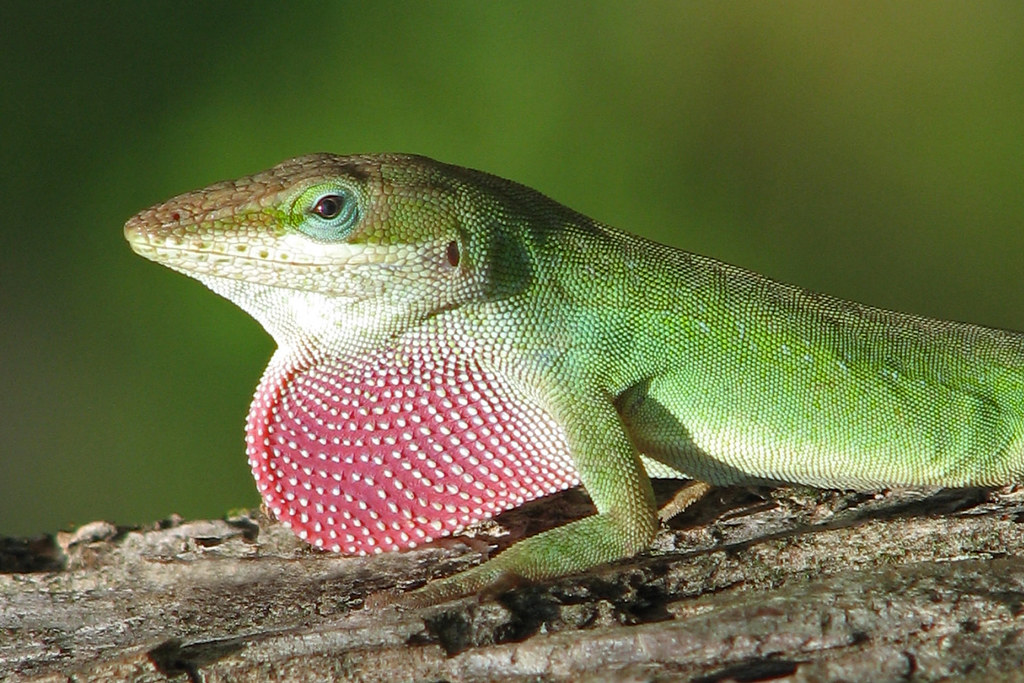
Often mistakenly called “chameleons,” green anoles are native to the southeastern United States and can change color from bright green to brown based on temperature, mood, and environment. These slender lizards measure 5-8 inches long and feature a distinctive pink or red dewlap (throat fan) that males extend during courtship displays and territorial confrontations.
Green anoles are primarily arboreal, meaning they spend most of their time in trees, shrubs, and vines, though they’ll readily inhabit garden walls and house exteriors. They feed mainly on insects like flies, spiders, and crickets, making them beneficial garden residents that help control pest populations naturally.
2. Brown Anole (Anolis sagrei)
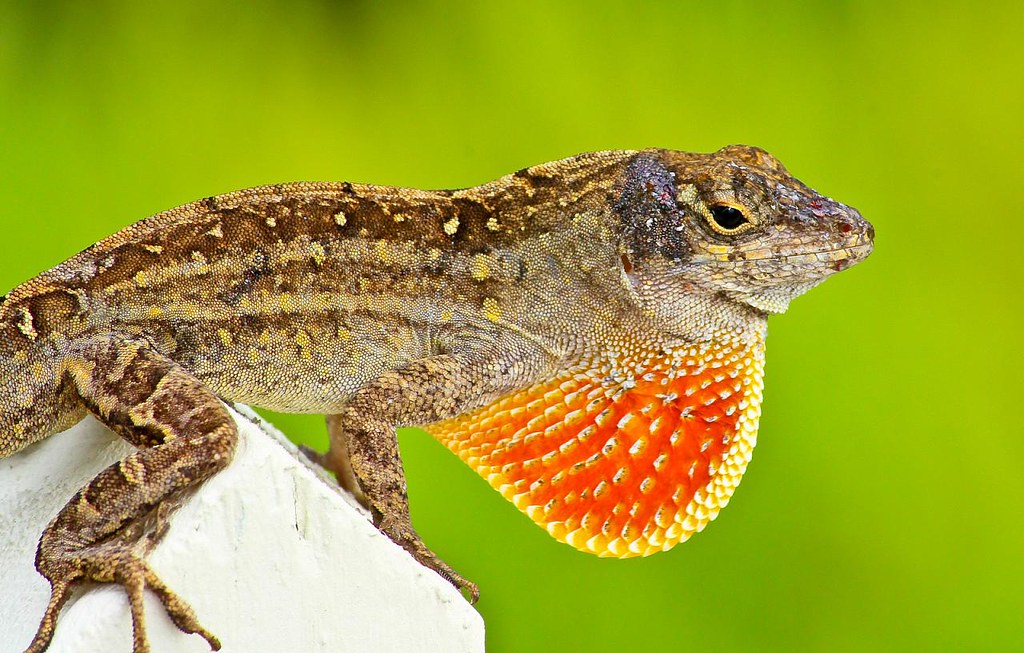
The brown anole is an invasive species from Cuba and the Bahamas that has established strong populations throughout the southeastern United States, particularly in Florida. Distinguished by their brown coloration with diamond patterns and a yellow-orange dewlap on males, brown anoles have unfortunately displaced native green anoles in many areas.
Unlike their green cousins, brown anoles are primarily terrestrial, preferring to hunt on the ground and on low vegetation, though they can climb when necessary. These adaptable lizards thrive in disturbed habitats and suburban environments, often reaching higher population densities in neighborhoods than in natural areas.
3. Eastern Fence Lizard (Sceloporus undulatus)
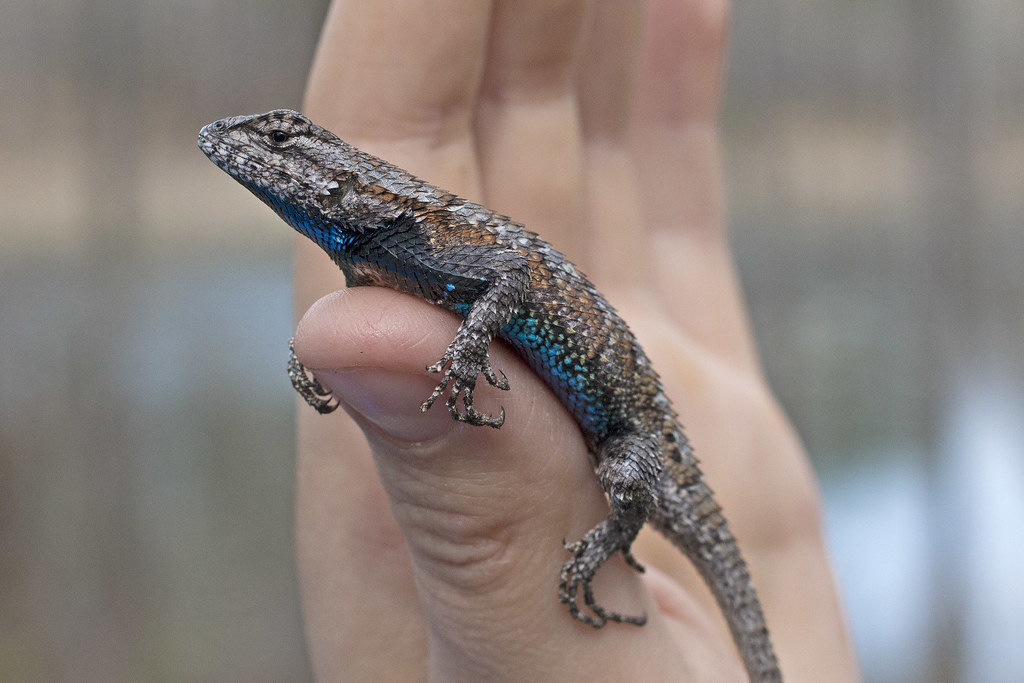
The eastern fence lizard inhabits much of the eastern United States, from New York to Florida and west to Ohio and Texas. These spiny-scaled lizards are typically gray or brown with undulating dark crossbands and measure about 4-7 inches in length. Male eastern fence lizards display vibrant blue patches on their throats and bellies, which they flash during territorial and mating displays.
Fence lizards are often spotted basking on wooden fences, fallen logs, rock piles, and tree trunks, positioning themselves to optimize sun exposure while staying near quick escape routes. Their diet consists primarily of ants, beetles, spiders, and other small invertebrates, making them valuable allies in garden pest management.
4. Western Fence Lizard (Sceloporus occidentalis)
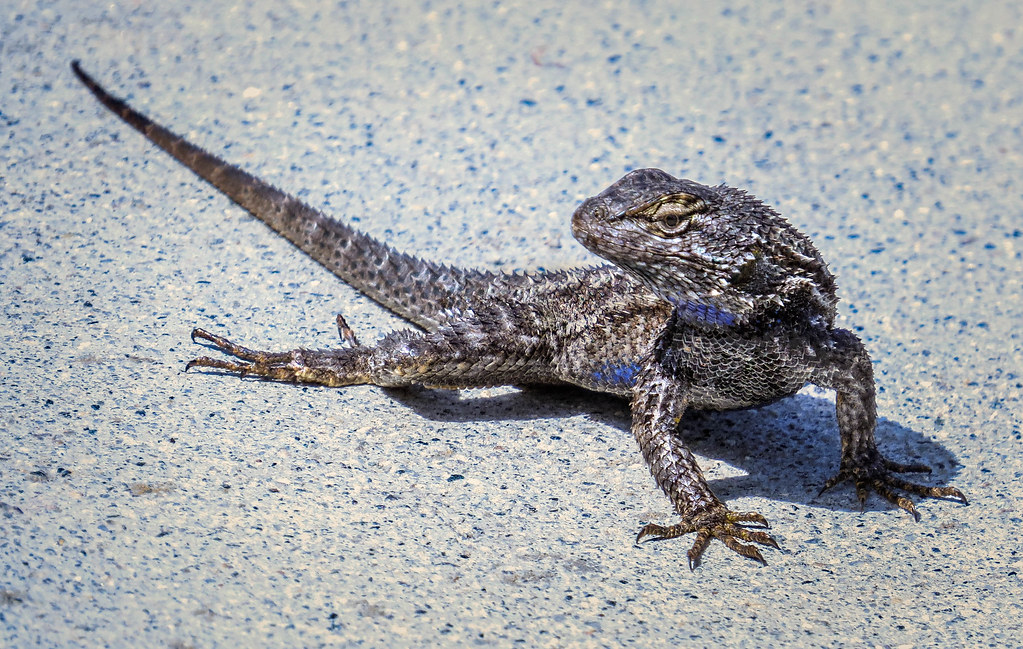
Also known as the “blue belly,” the western fence lizard is ubiquitous throughout California, Oregon, Washington, Nevada, western Utah, and Idaho. Similar to their eastern relatives, males sport brilliant blue patches on their undersides, though the western species typically has more pronounced blue coloration. These lizards play a fascinating role in human health by cleansing ticks of Lyme disease bacteria when the parasites feed on lizard blood.
Western fence lizards are commonly seen doing push-ups on rocks, fences, and walls – a behavior that serves both to regulate body temperature and as a territorial display. They’re hardy creatures that adapt well to suburban environments, making them one of the most commonly encountered reptiles in western backyards.
5. Common Side-blotched Lizard (Uta stansburiana)
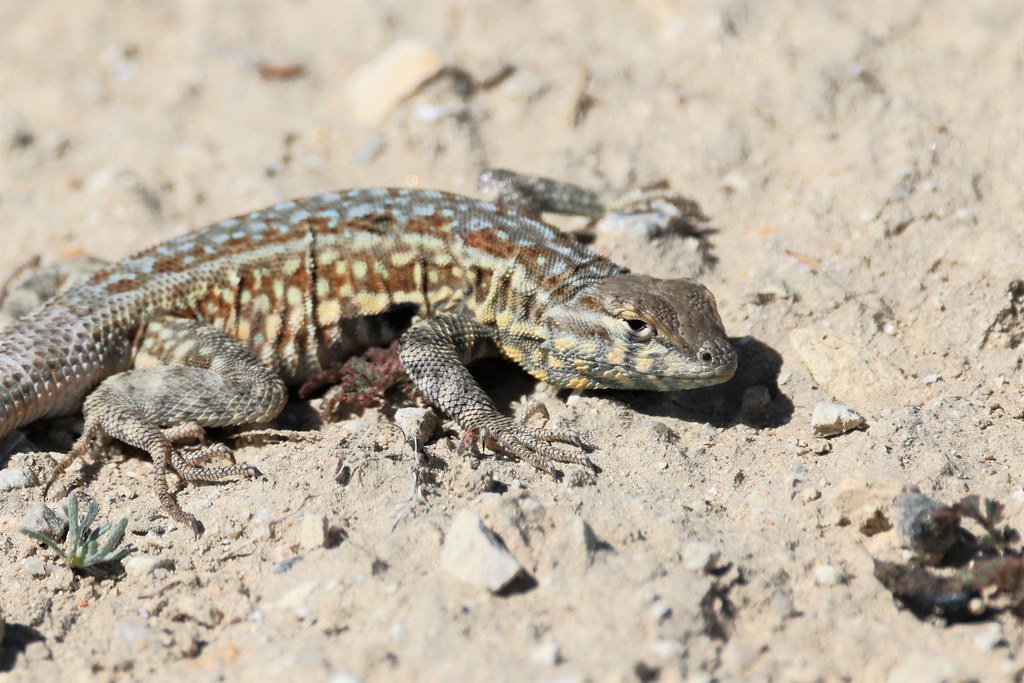
The common side-blotched lizard is abundant throughout the western United States, from Washington to Texas and throughout the Southwest. These small lizards, typically measuring just 1.5-2.5 inches in body length, are identified by the characteristic dark blotch behind their front legs. Male side-blotched lizards exhibit one of the most fascinating evolutionary strategies in the reptile world: they come in three distinct “morphs” (orange, blue, and yellow-throated), each with different mating strategies that interact in a biological rock-paper-scissors dynamic. These lizards thrive in arid environments and are often seen scurrying across rocks, driveways, and garden walls in desert and semi-desert suburban areas, where they consume small insects and spiders.
6. Five-lined Skink (Plestiodon fasciatus)
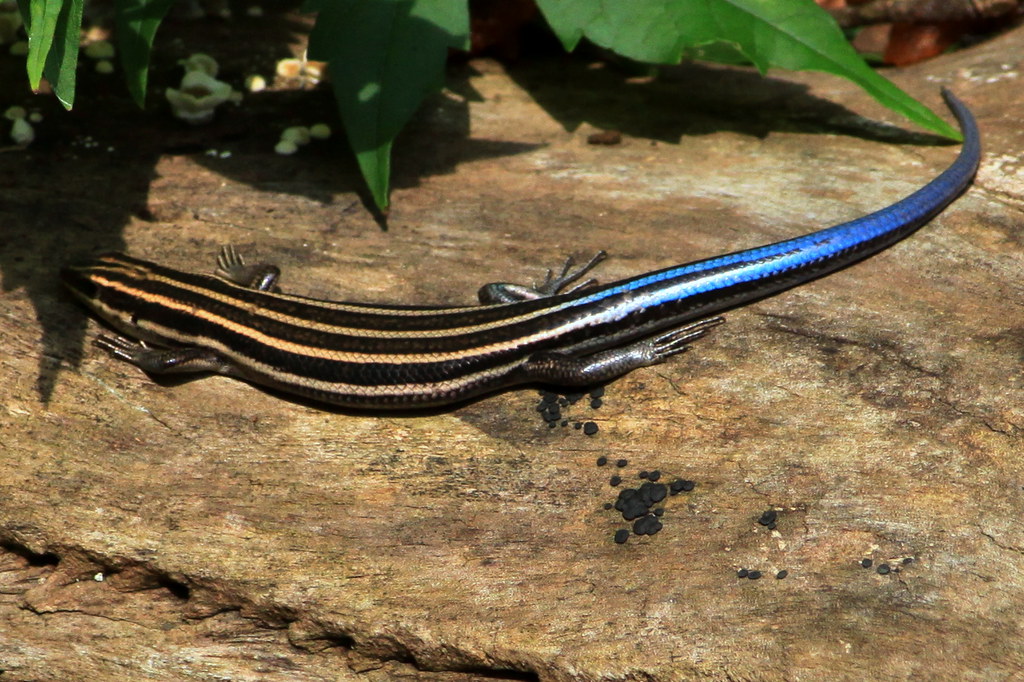
The five-lined skink is distinctive for the five light stripes running down its dark body and, in juveniles, a brilliant blue tail that serves to distract predators. These eastern United States natives typically reach 5-8.5 inches in length and have smooth, glossy scales that give them a sleek appearance. Young five-lined skinks look dramatically different from adults, with the blue tail fading and the stripes becoming less distinct as they mature; adult males develop reddish-orange jaws during breeding season. Five-lined skinks are semi-arboreal but are most often found in leaf litter, under logs, or around rock piles and woodpiles in backyards. They’re beneficial predators of cockroaches, crickets, beetles, and other household and garden pests.
7. Texas Spiny Lizard (Sceloporus olivaceus)
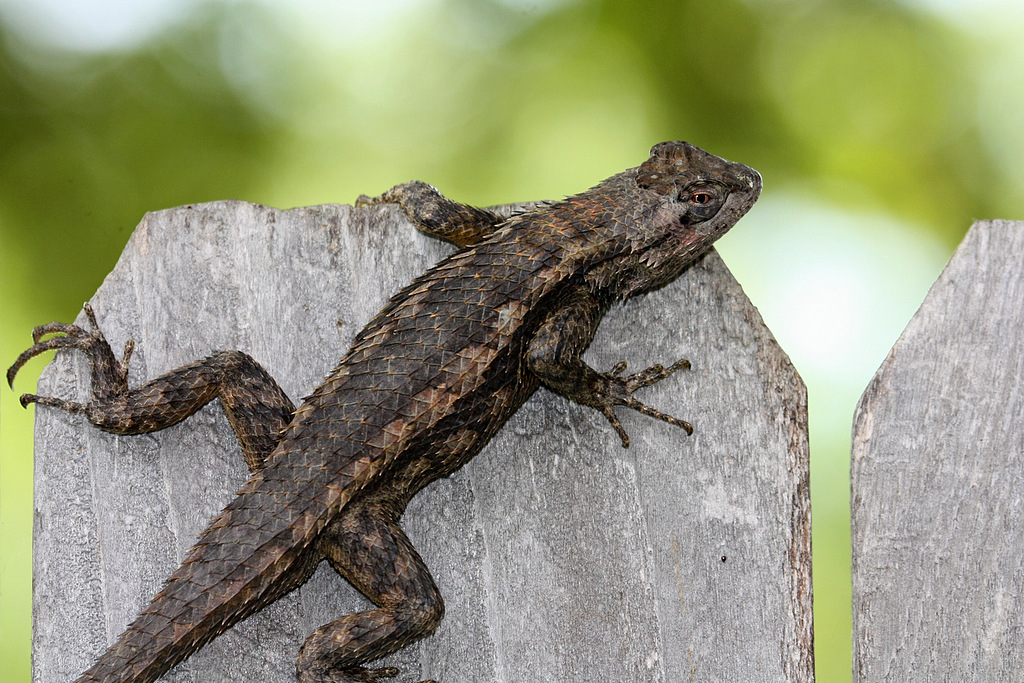
The Texas spiny lizard is a large, robust species found throughout Texas and into Oklahoma, Arkansas, and northeastern Mexico. Growing up to 11 inches in total length, these impressive lizards have rough, spiny scales and coloration that typically includes a pattern of dark wavy crossbands on a gray, brown, or rusty background.
Unlike many lizards that flee at the first sign of danger, Texas spiny lizards often rely on their camouflage and will freeze in place when threatened, making them easier to observe. They’re excellent climbers, frequently seen ascending trees, walls, and fences in suburban areas, where they hunt for insects and occasionally consume small vertebrates like baby mice or smaller lizards.
8. Mediterranean House Gecko (Hemidactylus turcicus)
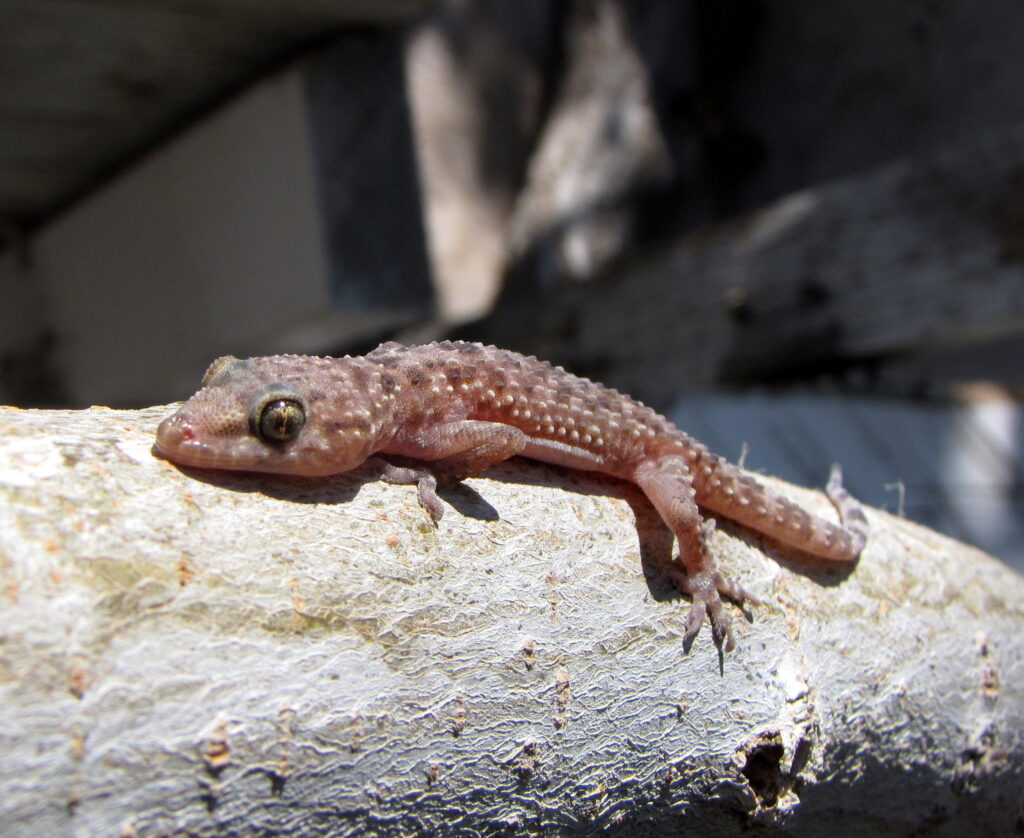
The Mediterranean house gecko is not native to the United States but has established populations in many southern states, particularly in urban and suburban areas. These small, pale, translucent geckos are easily identified by their warty skin, large eyes with vertical pupils, and specialized toe pads that allow them to climb smooth vertical surfaces and even walk across ceilings.
Unlike most lizards in this list, Mediterranean house geckos are primarily nocturnal, emerging at dusk to hunt insects that are attracted to porch and security lights. Their distinctive chirping calls can often be heard around homes in the southern U.S., especially during warm summer evenings when males vocalize to defend territory and attract mates.
9. Common Gecko (Hemidactylus frenatus)

Also known as the house gecko or Pacific house gecko, this non-native species has established itself in Florida, Hawaii, and parts of Texas and Louisiana. Similar to the Mediterranean house gecko, these pale, nocturnal lizards have specialized toe pads for climbing smooth surfaces and are frequently seen on walls and ceilings near outdoor lights. The common gecko can be distinguished from its Mediterranean cousin by its smoother skin and different vocalizations, which include multiple chirping calls that sound somewhat like a bird.
These adaptable lizards have successfully colonized human habitations worldwide and are generally welcomed as they consume mosquitoes, cockroaches, and other household pests. In Hawaii, they’re so common that they’re often considered unofficial roommates in many homes.
10. Alligator Lizard (Elgaria spp.)
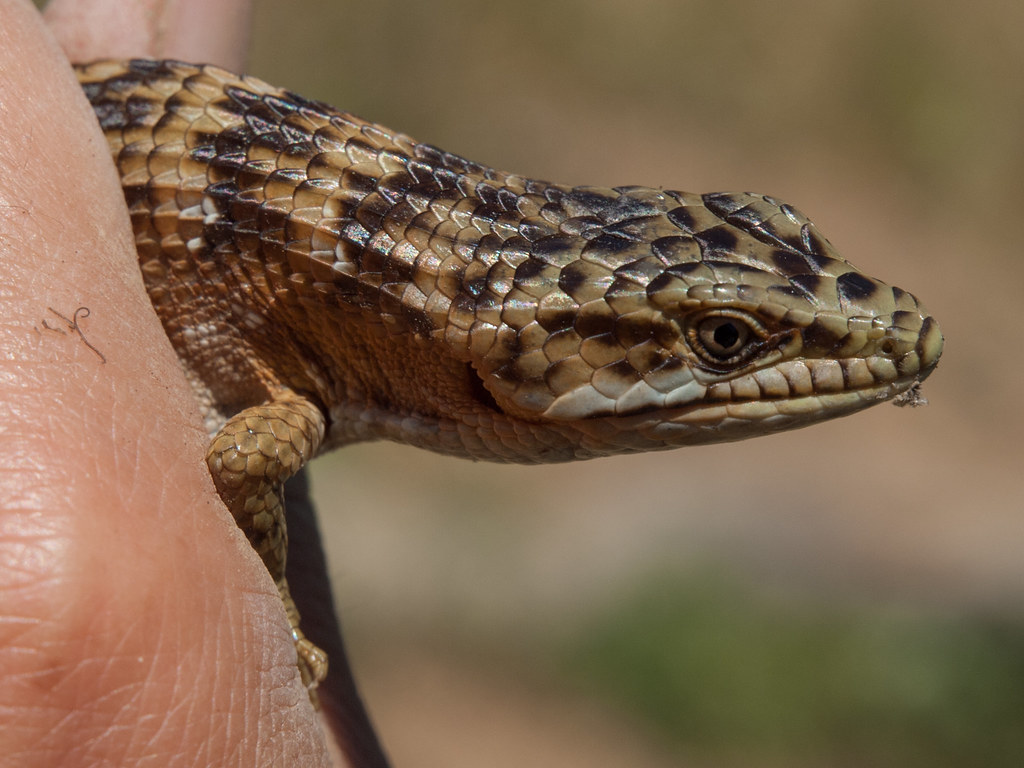
Alligator lizards, found primarily in western states, are named for their elongated bodies and rectangular, armored scales that resemble miniature alligators. The northern alligator lizard (Elgaria coerulea) and southern alligator lizard (Elgaria multicarinata) can reach 7-13 inches in length and have powerful jaws that they’ll use in defense if handled. Unlike many backyard lizards, alligator lizards don’t depend on basking for temperature regulation and can be active on cool, overcast days when other lizards remain hidden. These secretive reptiles are typically found in moist environments such as gardens with dense vegetation, compost piles, or under rocks and logs, where they hunt for slugs, snails, and larger insects that many other lizards avoid.
11. Desert Spiny Lizard (Sceloporus magister)
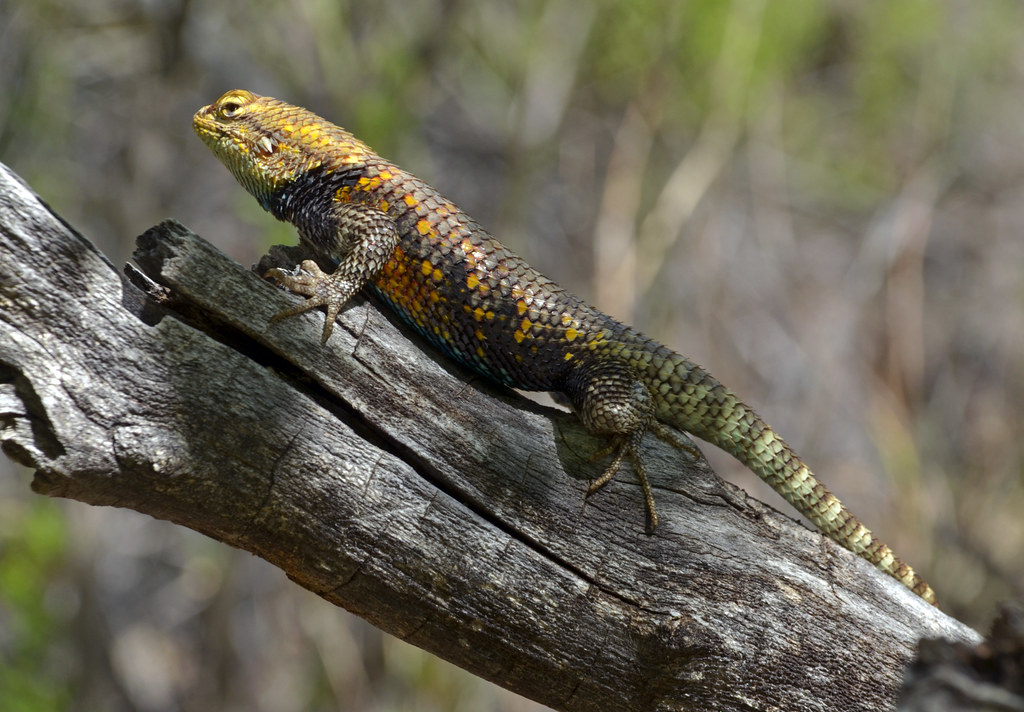
The desert spiny lizard is a robust reptile found throughout the southwestern United States, from Nevada and Utah south to Arizona, New Mexico, and western Texas. These large lizards (up to 5.5 inches in body length) have stocky bodies covered with pointed, keeled scales and display variable coloration including gray, brown, rust, or olive tones with darker bands or blotches. Males develop bright blue patches on their bellies and throats during breeding season and may also show orange or rusty coloration on their backs.
Desert spiny lizards are adaptable to suburban environments, especially in desert landscaped yards, where they’re frequently seen basking on walls, boulders, or tree trunks. They feed on a wide variety of insects and occasionally consume small vertebrates, making them efficient natural pest controllers.
12. Six-lined Racerunner (Aspidoscelis sexlineatus)

The six-lined racerunner earns its name from both its distinctive pattern of six light stripes running the length of its body and its incredible speed—these lizards can sprint at up to 18 miles per hour. Found throughout much of the central and eastern United States, these active hunters differ from many backyard lizards in their foraging style, actively searching for prey rather than ambushing it. Six-lined racerunners prefer open, sunny areas with loose soil or sand where they can dig burrows, making them common in sandy gardens, baseball fields, and areas with sparse vegetation. Unlike most lizards in this list, racerunners are primarily terrestrial and rarely climb, instead using their exceptional speed to escape predators in open terrain.
13. Whiptail Lizards (Aspidoscelis spp.)
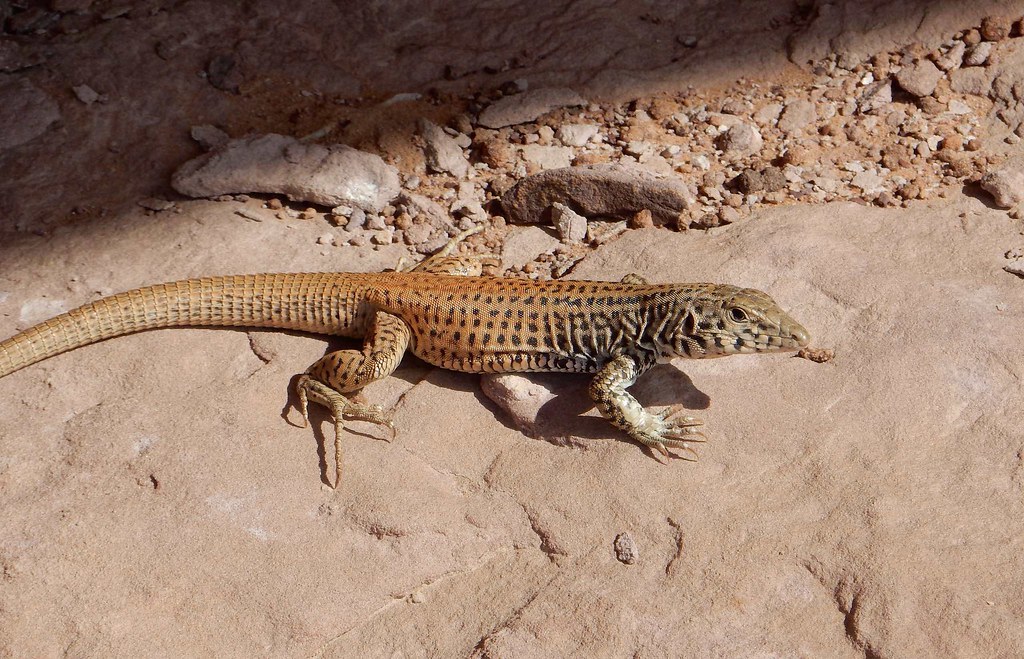
Several species of whiptail lizards inhabit the western and southwestern United States, identifiable by their slender bodies, extremely long tails, and pointed snouts. Most species display striped patterns running the length of their bodies, though coloration varies by species and region. What makes whiptails particularly fascinating is that several species reproduce through parthenogenesis—a form of asexual reproduction where females produce offspring without fertilization, resulting in populations comprised entirely of females.
These active foragers constantly move through their territory with their snouts to the ground, using their excellent sense of smell to locate buried insects and other invertebrates. Whiptails thrive in arid environments and are commonly seen in xeriscaped yards and desert gardens throughout the Southwest.
14. Broad-headed Skink (Plestiodon laticeps)

The broad-headed skink is one of the largest skinks in the United States, with adults reaching up to 13 inches in total length. Found throughout the southeastern states, these powerful lizards are named for the distinctively wide heads of adult males, which develop bright orange-red coloration during breeding season. Young broad-headed skinks display the characteristic blue tail and five-lined pattern of many juvenile skinks, but adults develop an olive-brown to bronze coloration with the stripes fading or disappearing entirely.
These impressive lizards are excellent climbers and are often spotted ascending trees in wooded yards, where they hunt for insects, spiders, smaller lizards, and occasionally bird eggs or nestlings. Despite their intimidating appearance, broad-headed skinks are typically shy and will retreat quickly when approached by humans.
America’s backyard lizards represent a fascinating mix of native and introduced species that have adapted to life alongside humans. These reptiles provide natural pest control services and endless entertainment for observant homeowners. By creating lizard-friendly habitats with rocks, logs, native plants, and chemical-free gardening practices, you can encourage these beneficial creatures to take up residence in your outdoor spaces.
Whether you’re in the arid Southwest, the humid Southeast, or somewhere in between, keep an eye out for these remarkable reptiles—each with its own unique adaptations, behaviors, and ecological role. Not only will observing these backyard residents enhance your connection to the natural world, but it may also inspire a deeper appreciation for the wildlife that thrives in even the most developed environments.


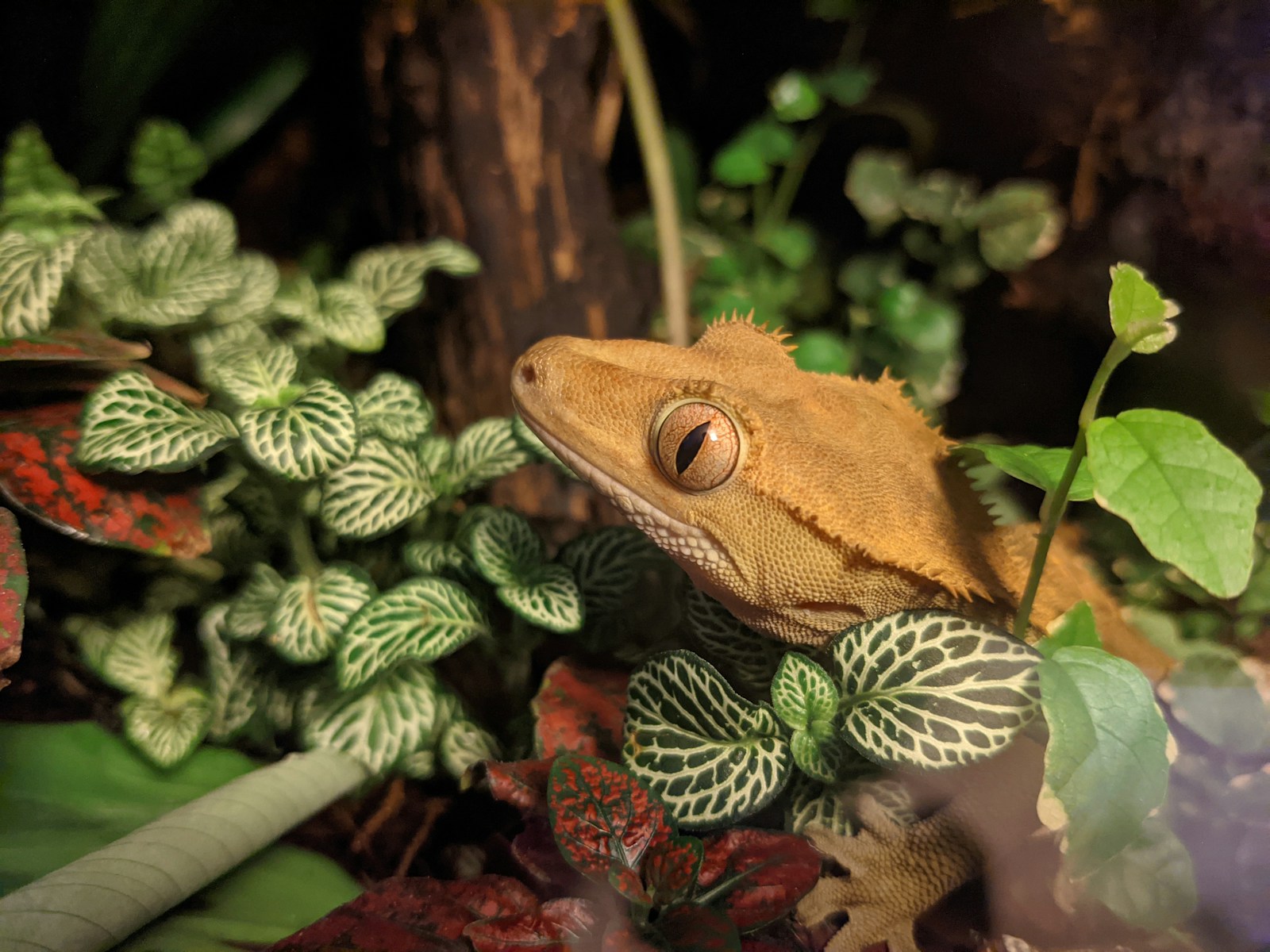
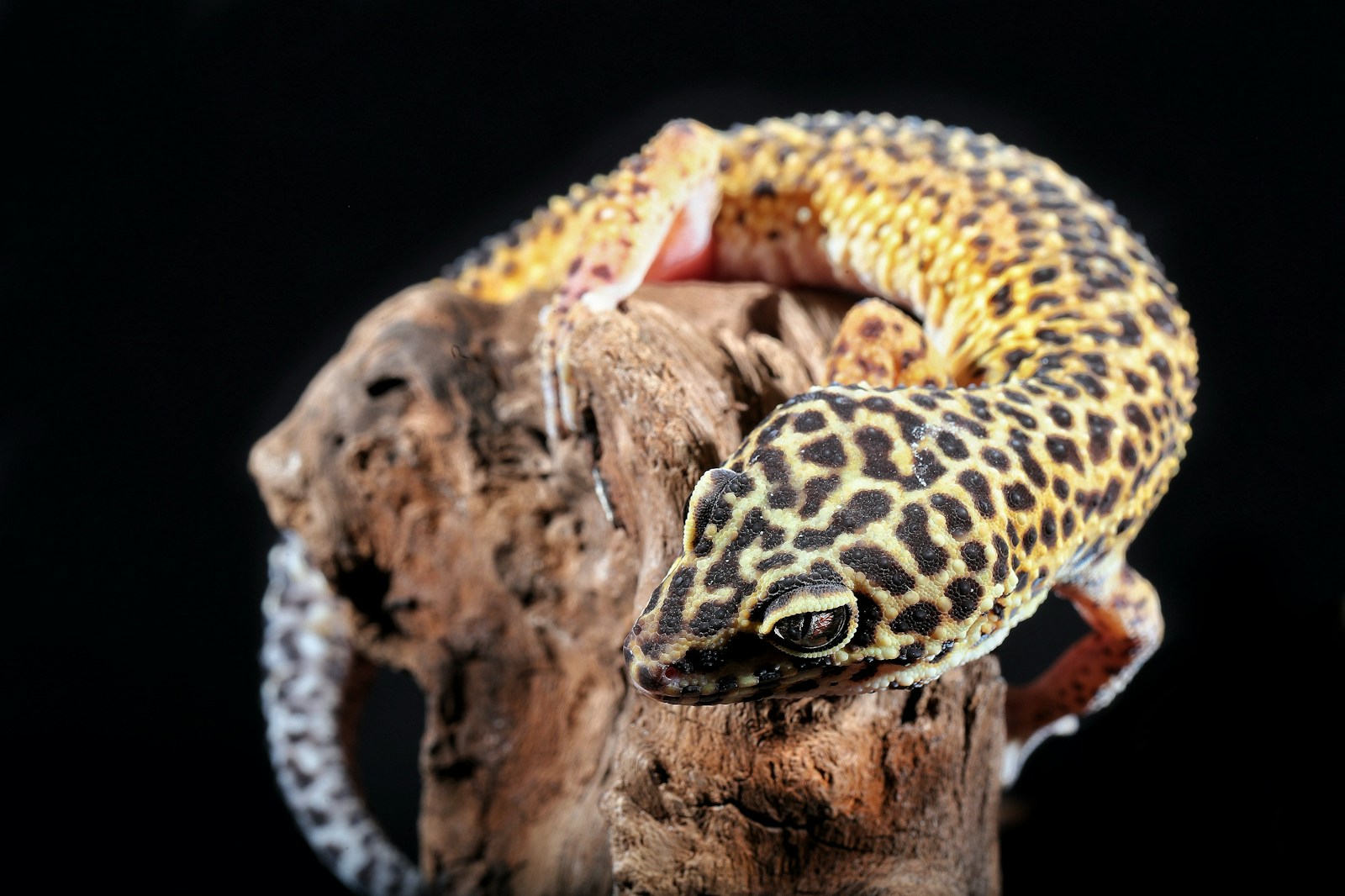

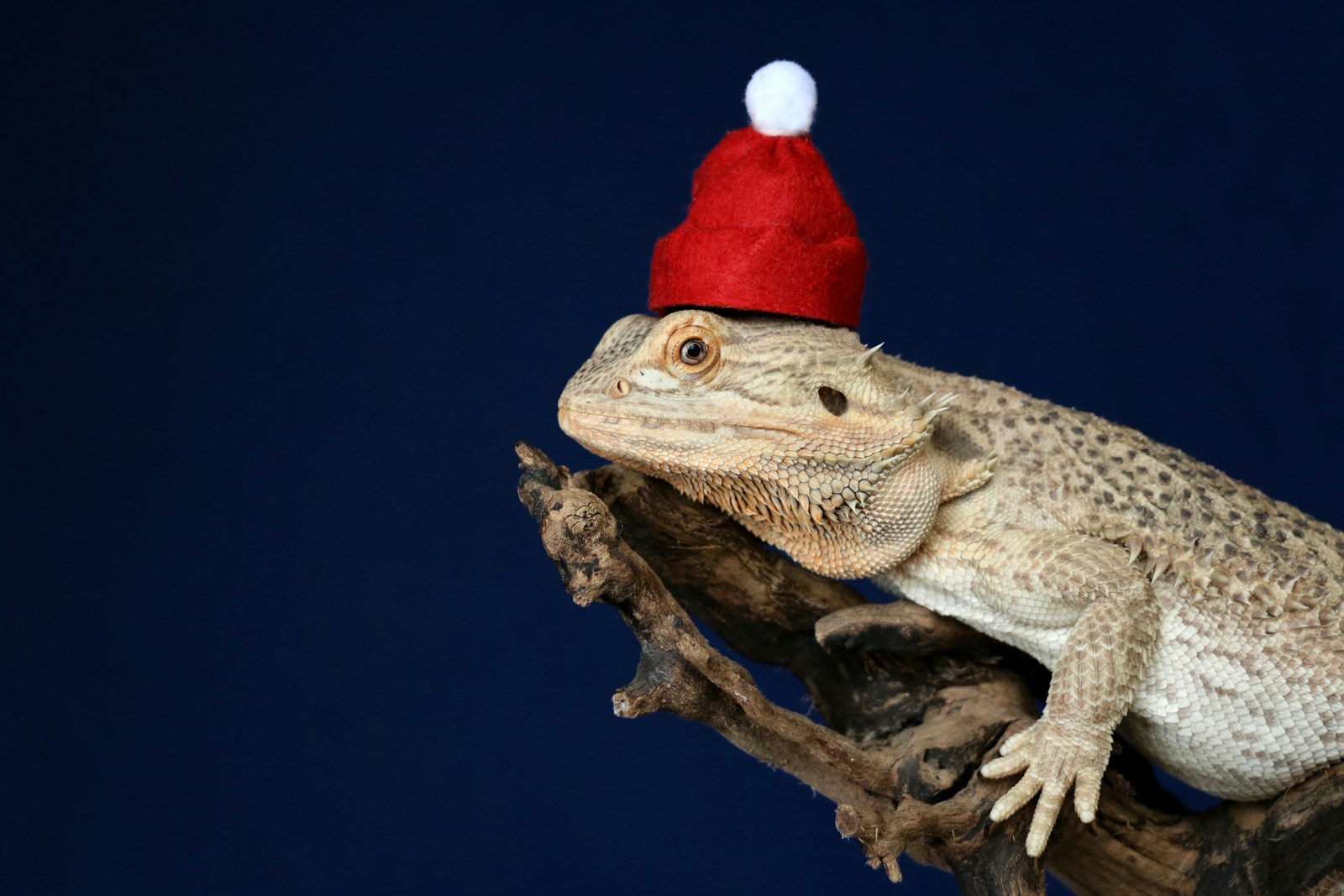
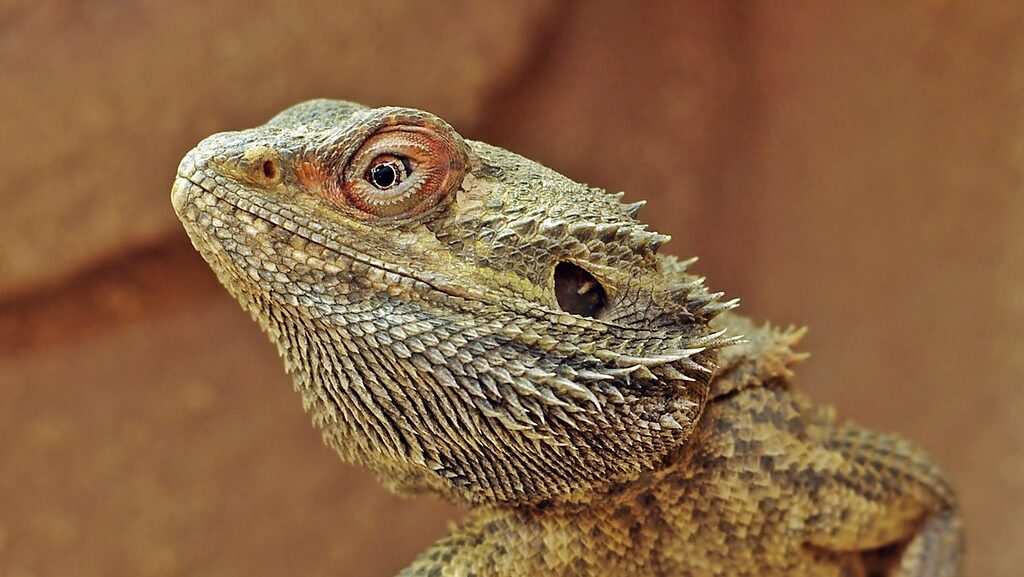
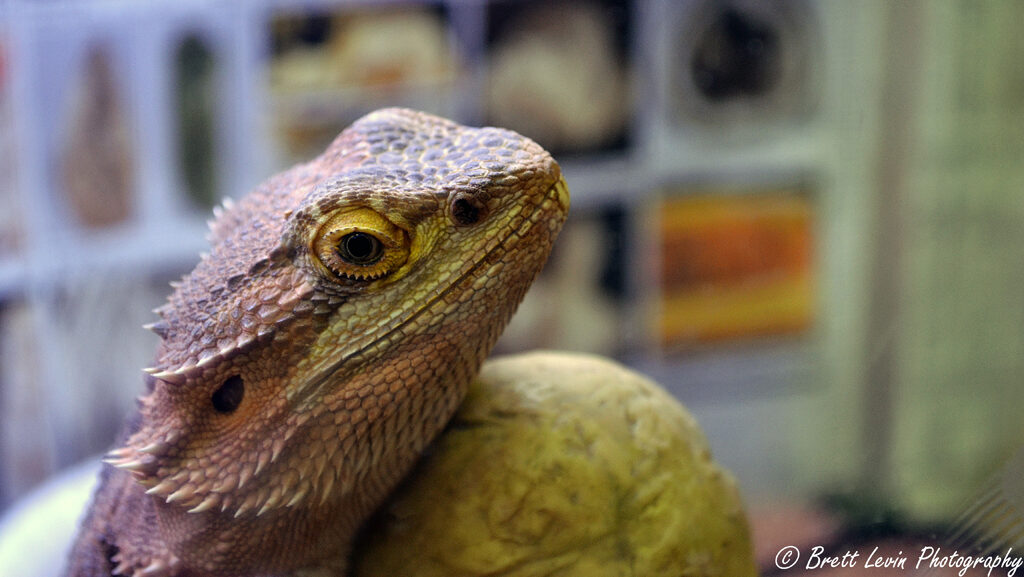
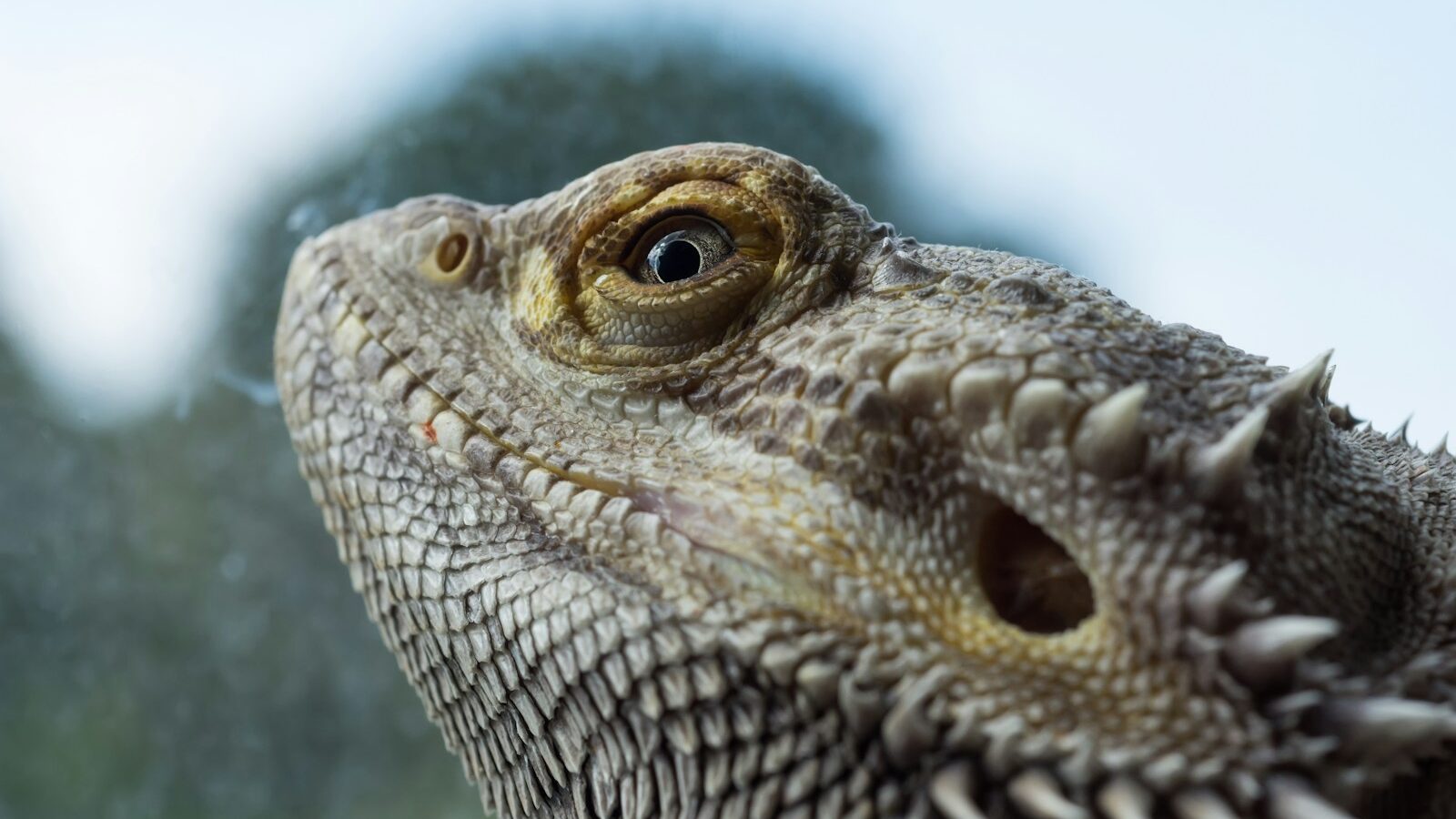
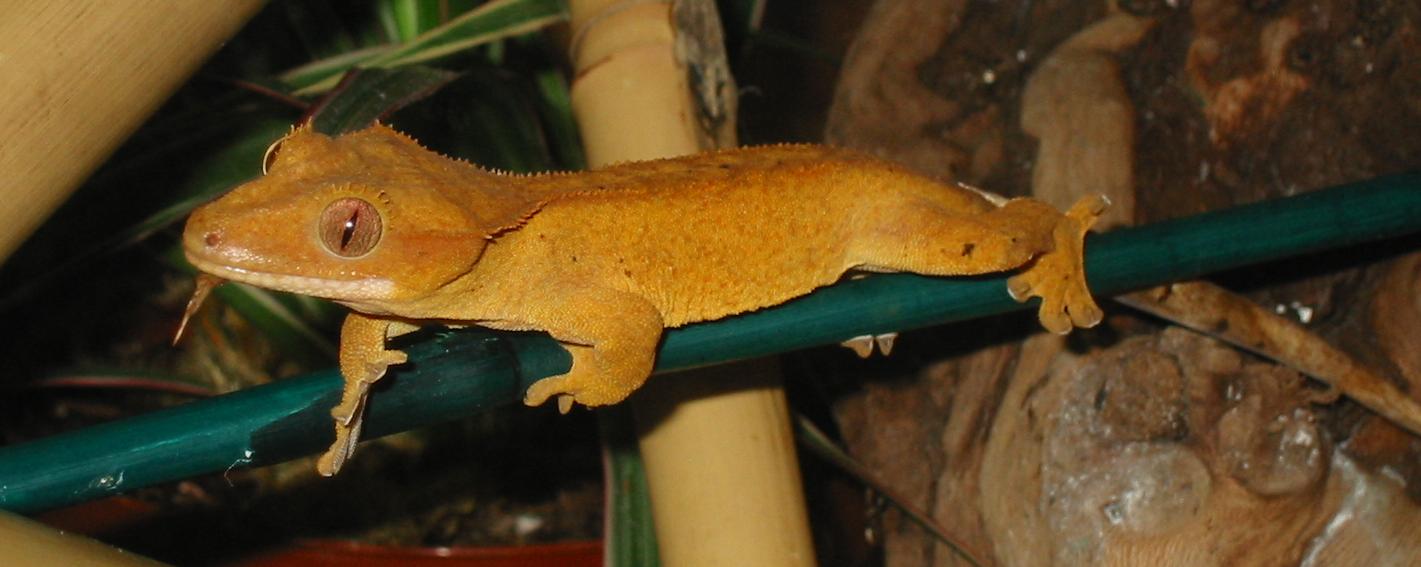
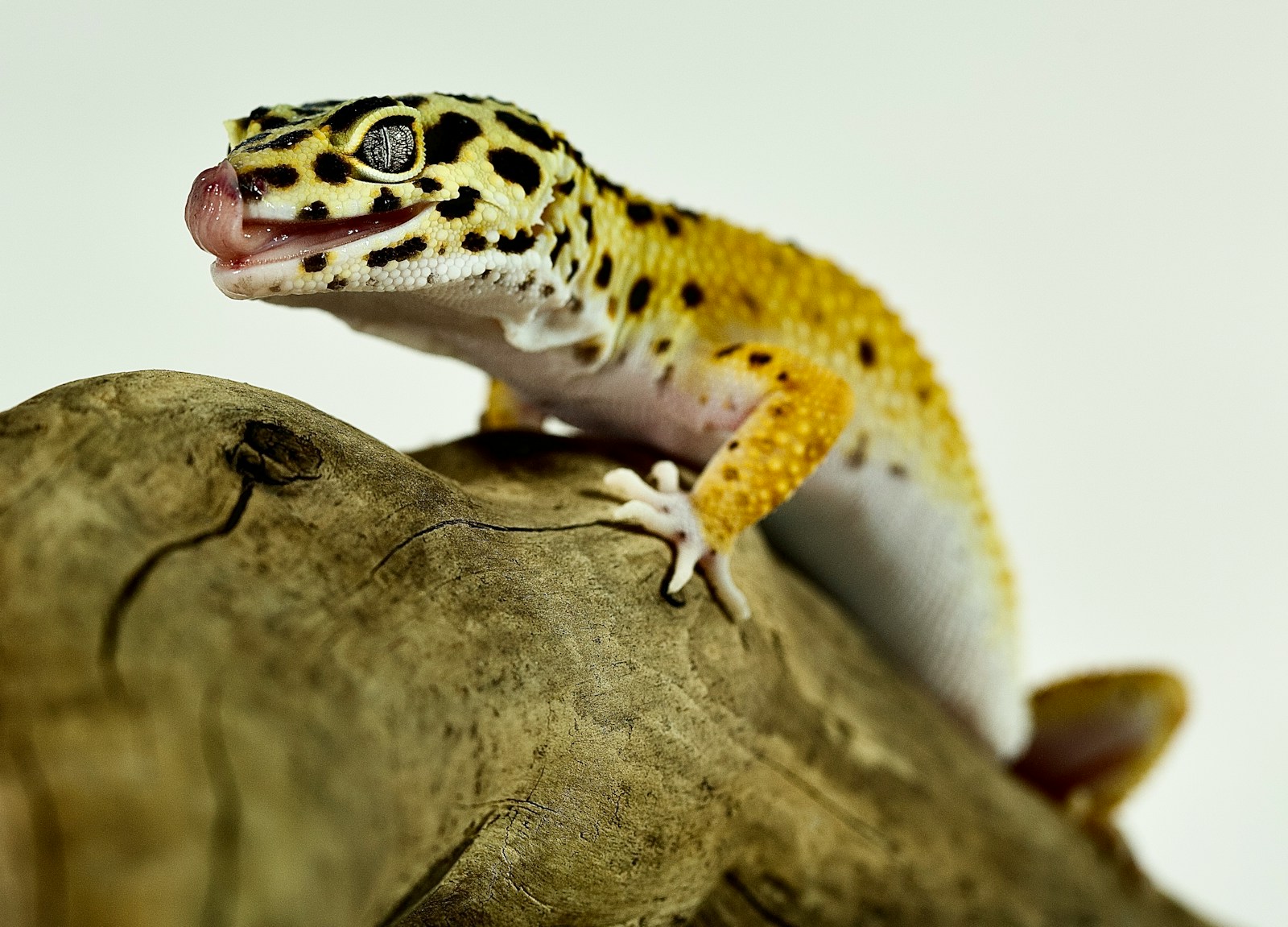

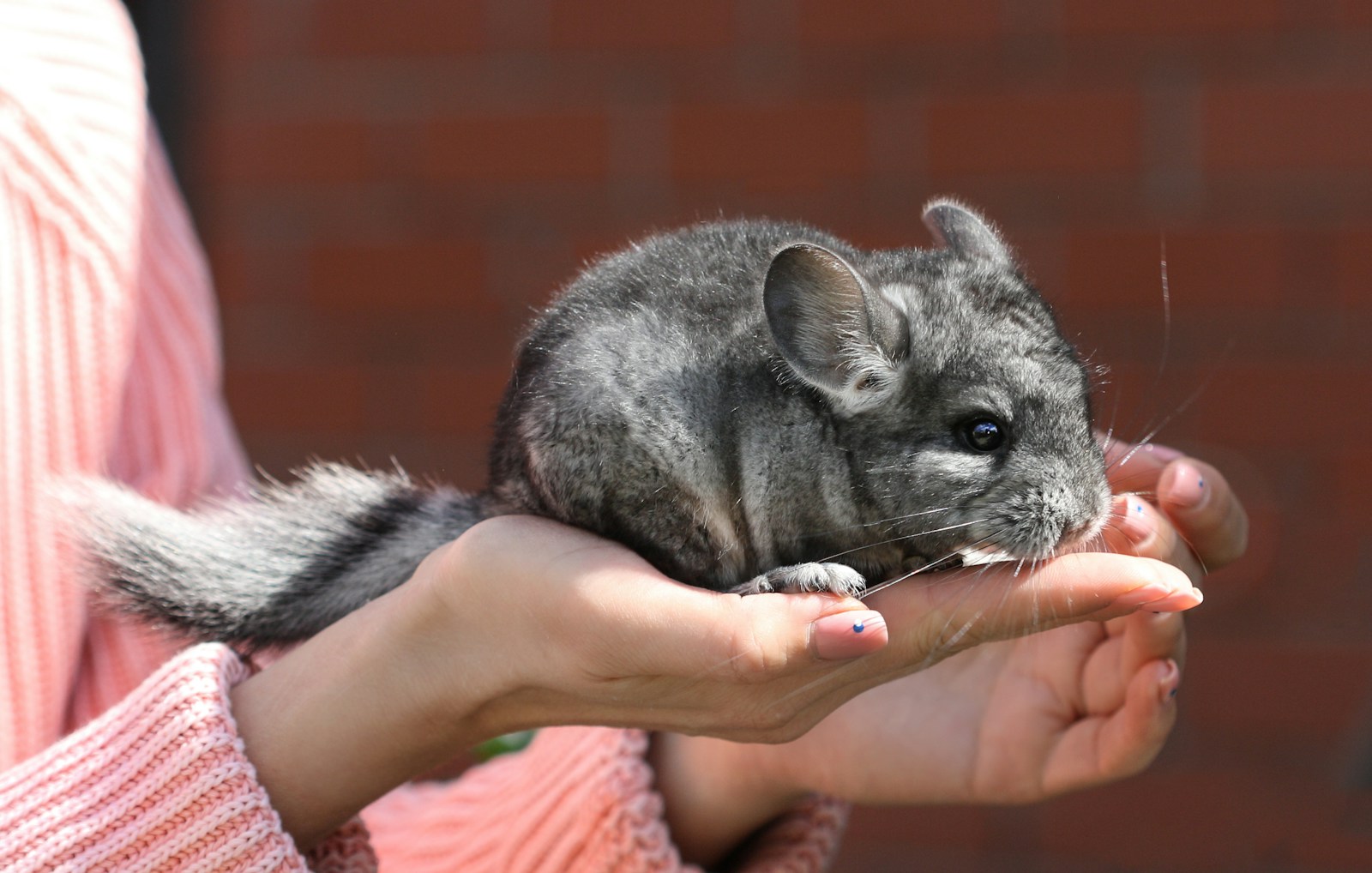

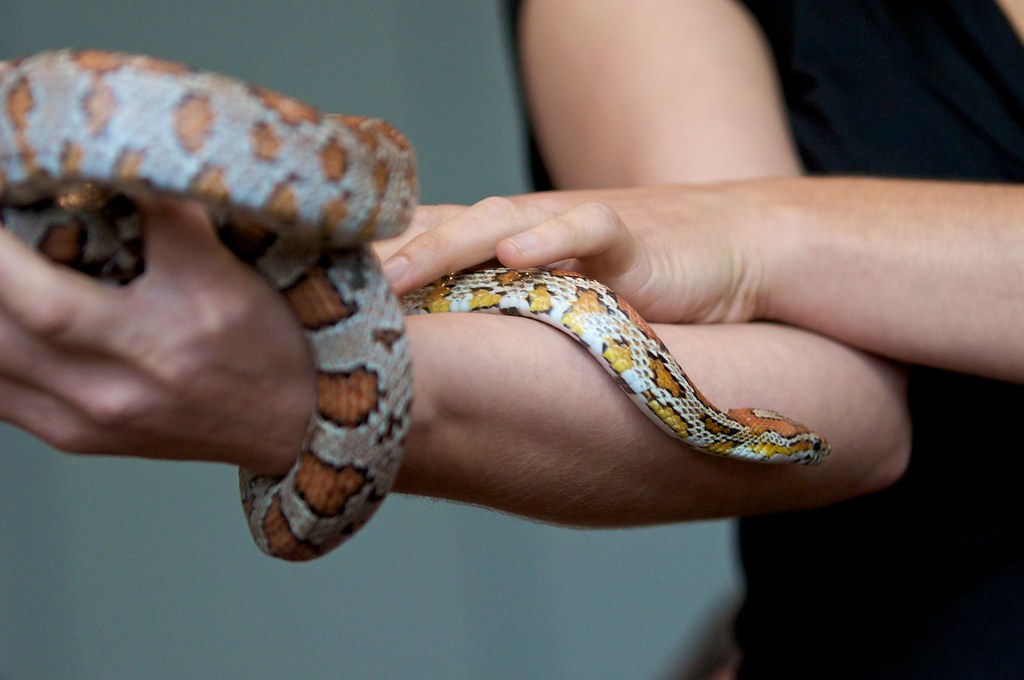
Leave a Reply